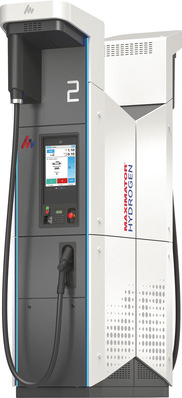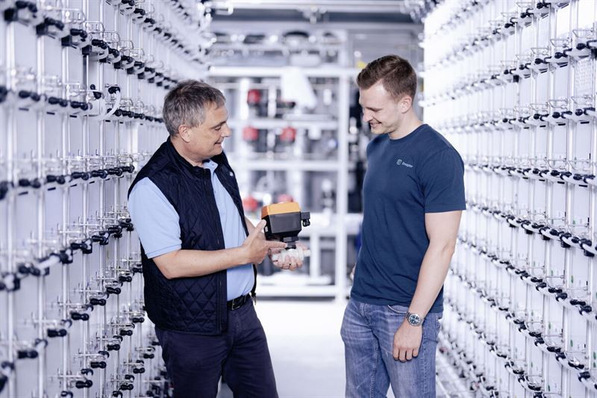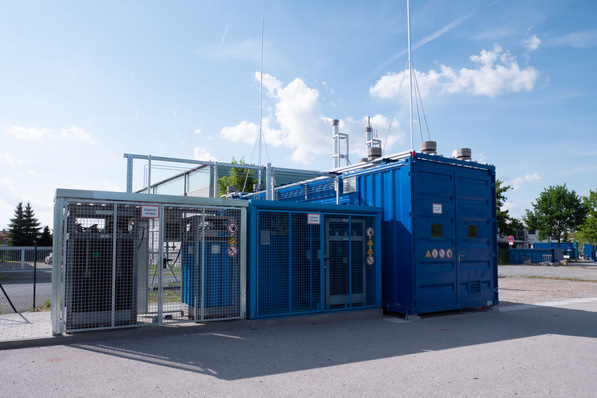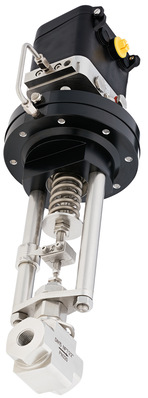“It is a new solution for a new market,” says Vincent Designolle, who is responsible for hydrogen at Vallourec. The underlying challenge, however, is as old as the world itself: the sun only shines during the day, and the wind blows with varying intensity. Anyone who wants to produce and use green hydrogen must adapt to these fluctuations. However, steel and chemical plants cannot simply be ramped up or down according to the weather. “The offtaker wants stability in supply,” says Designolle. To use a fluctuating supply for constant production, storage is needed—and in the case of industrial operations, these must be quite large. With up to 100 tonnes of hydrogen storage capacity, Delphy falls into this category. For comparison: the new large trailer from Linde holds 3.9 tonnes of hydrogen, the Harsefeld cavern storage facility in northern Germany is planned to hold 7,500 tonnes, and the daily demand of steel and ammonia plants is in the range of several hundred tonnes. With a 100-tonne storage system, a smaller plant or one in an early expansion stage can easily get through the night. Another customer group includes large refuelling stations or operators of backup solutions, for example for hospitals or data centres. Here, the requirement is a few tonnes per day.
Storage provides flexibility
Beyond the absolute necessity, storage systems also enable flexibility to respond to different situations in the electricity market and the grid. This can make a real difference, as in many countries flexibility means a price advantage when purchasing electricity. In Germany, many companies rely on being able to buy electricity more cheaply on the power exchange during low-load periods. In France, the grid operator pays a bonus if large customers can reduce their consumption at specific times. And Saudi Arabia has drastic differences between electricity tariffs during peak and off-peak periods. In summary, this always means: those who can act flexibly reduce their electricity costs – and thus the strongest cost driver in hydrogen production via electrolysis.
So far, when industrial companies respond to this situation, battery storage systems have mainly been the technology of choice. These buffer expensive peak loads and shift consumption to times when electricity is cheaper. Vallourec’s new Delphy storage system must therefore also be compared with these. The manufacturer has looked at various use cases. In short timeframes, for example with 15-minute optimisation, the battery has the advantage. But the longer the period to be bridged, the more the cost calculation shifts in favour of the Delphy storage system. When it comes to bridging the nightly generation gap in solar power within a hydrogen value chain, the manufacturer claims it is clearly ahead.
However, if the hydrogen is converted back into electricity, the calculation shifts in favour of the battery. In addition, for the sake of simplicity, the comparison refers to the CAPEX of the storage systems. System costs may differ. In many applications, the battery would be credited with enabling more continuous operation of the electrolyser, allowing it to be smaller. In favour of the Delphy storage system, it should be noted that even with battery storage, a hydrogen storage system is often planned in addition to bridge possible outages.
Being safe while saving space
The storage design takes into account two typical conditions at industrial sites: limited space and strict safety regulations. With regard to the subsoil, the technology is quite flexible, as the solution is modular and adapted to the respective conditions.
“There are very few show stoppers in terms of soil. It is mostly about finding the best combination of depth and the number of tubes,” says Designolle. The modular design and adjustable length of the cylinders make the storage system highly scalable. Typically, 10 tonnes of hydrogen can be stored in 80 cylinders. There is no hard limit, but if the number of cylinders is too high, the piping eventually becomes too complex.
As far as civil engineering is concerned, Vallourec relies on diaphragm wall drilling in combination with earth excavation—a proven and space-saving method also used to build ventilation shafts for underground railways in city centres. A concrete ring supports the outer edge of the pit, while excavation can continue deeper inside. Of course, digging deeper means higher costs. However, Vallourec points out that a conventional pressure vessel also requires a foundation, and with the Delphy concept, increasing size reduces the specific costs. All in all, the CAPEX per storage capacity for Delphy is similar to that of above-ground pressure vessels, says Designolle. However, the underground storage system scores points with its lower space requirement and safety. The vertical underground design means that even in the event of a leak, the escaping hydrogen cloud would be significantly smaller. Safety distances can therefore be reduced, which also saves space at ground level.
The pilot project has been in operation since November 2023, the tests have been completed, and DNV certification was finalised in June 2025. Commercialisation can now begin. Memorandums of Understanding (MoUs) have already been signed: with H2V for projects for the production and use of green hydrogen, and with NextChem Tech for applications in the field of green hydrogen and green ammonia. Discussions are ongoing with other companies, says Designolle. Twelve to eighteen months after the first order is received, the first commercial underground tube storage facility could go into operation, estimates Designolle. The main reason for the long lead time is the delivery times for components, especially the pressure vessels, measurement technology, and automation. The actual civil engineering could be completed more quickly, it is said. In theory, if an order were placed today, an underground tube storage facility could be operational by the end of 2026. Vallourec, however, does not want to commit to this date. “We have a pipeline of opportunities,” is all that is said so far.









